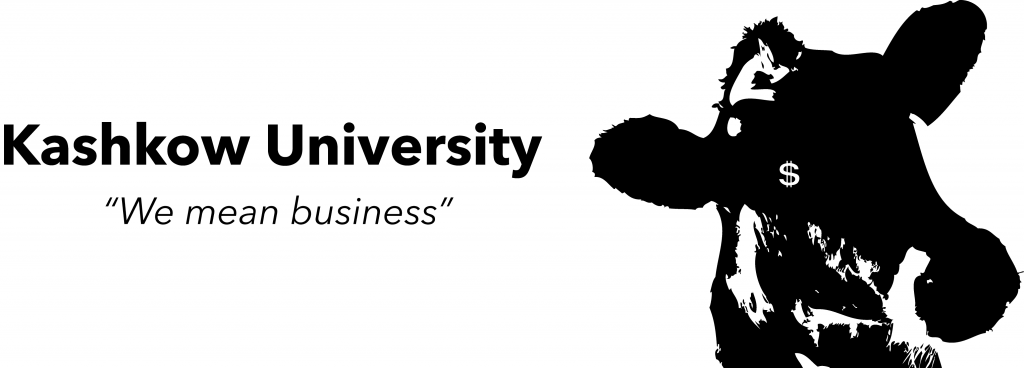 Kashkow University announced today the initiation of an innovative new program of online education that it says will create an “unprecedented revenue stream for non-profit institutions of higher learning,” while streamlining the university staff.
Kashkow University announced today the initiation of an innovative new program of online education that it says will create an “unprecedented revenue stream for non-profit institutions of higher learning,” while streamlining the university staff.
The Kashkow scheme is called Massive Money-Making Opportunity: Opting Out Of Courses! (MMMOOOOC!). Under MMMOOOOC! PROGRAM, Kashkow would eliminate all classes. Instead, it would offer college credits and diplomas through a subscription service similar to the online movie and television service Netflix. The caliber of the degree purchased would be tied to the subscription level. For $29.99 per month, for example, one can receive credit for a full load of coursework that is “equivalent to a Duke University or Washington University in St. Louis,” according to the university. Johns Hopkins or Wesleyan-level coursework costs $69.99 per month, while a Premium membership (Harvard, Princeton, or Yale) can be purchased for $99.99 monthly. There is a three-month minimum contract, which enables one to purchase a complete course; an automatic renewal system allows one to “drop out” of taking the spring semester. The university will also offer a “Basic” membership: for $9.99 a month, students can pursue coursework toward the equivalent of a philosophy degree from the Delaware College of Textiles and Mines.
The new MMMOOOOCs! would be packed with information and essentially content-free. Subscribers would receive a full set of lecture notes, digests of reading materials, complete term papers (with bibliographies), and exam keys—everything needed to pass a course with a grade of A+ or higher. All exams and essays will of course be open-book, and students are encouraged to cut and paste from lecture materials in order to save time. This greatly increases the efficiency of the learning process, university spokesmen say.
Think of education like filling a bucket, said the former Kashkow Dean of Students, Prof. Tweed Pantsuit. In conventional teaching, the faucet is an old fashioned pump handle and the bucket is full of holes. The massively online course movement is a firehose that the student can turn on and off at will, while holding the bucket herself. The result is much more water hitting the bucket in less time—and as we learned in quantum mechanics (wasn’t it?) time is money. Prof. Pantsuit said more about the bucket model, but frankly it wasn’t printable.
The streamlining of courses into “courseware” will have a big impact on the university’s bottom line, according to a Kashkow spokeman. It will enable the university to trim the faculty salary and benefits budget from $75 million to $342.50, according to official university documents we obtained. The bold new plan would reduce the current faculty of 225 full-time professors down to two part-time adjuncts: one for “arts” and one for “sciences.” The medical and engineering faculty would be spun off into for-profit companies, “Kashkow Medicine Dot Edu” and “Kashkow Engineering Dot Edu Dot Com,” respectively.
MMMOOOOCs! will “revolutionize higher education,” said to university president Dieter Geld. “By concentrating on what we do best,” said Geld, “We will be able to better serve our stakeholders.” Pressed on what it was that Kashkow did best, Geld said, “Serving our stakeholders!”
Further aiding the bottom line is the fact that Mr. Aristotle Spinoza, MA, the Professor of Arts, will be on leave next year, serving steakholders at a local “Surf-n-Turf” dining establishment. Raising profits while cutting costs is a “win-win” for education, Geld says.
Such a massive transformation of the university structure will not happen overnight, Geld noted; nor will it happen on its own. “To facilitate the reallocation of resources,” he said, “we are pleased to announce the appointment of a crack team of administrators.” Kashkow will be hiring six new deans and associate deans. Horatio S. O. B. Functionary, former Provost of Gouger Administrators’ College in Shillings-upon-Quid, U.K., will be the new Dean of Profiteering and will oversee the university’s money laundering program. Reed M. N. Weap, a freelance card sharp with over 20 years’ experience in money management, will be the new Dean of Accumulation. And John “Bud” Balls, formerly the football coach at Bigten University, will serve as Associate Dean of Associate Deans and will manage the university’s burgeoning roster of high-level administrators. (Balls will also head up the new varsity intramural sexual predator squad, The Fighting Flashers.) The Office of Public Relations will be split into three, each with its own associate dean: the Office of Stakeholder Relations, the Office of Trustee Relations, and the Office of Dean Relations. The new administrators will make an average of $550,000 per year salary, plus an average of nearly $4,000,000 per year in benefits.
When asked about the wisdom of adding high-paid staff as a cost-cutting measure, Geld replied, “It takes a crack team to bring out real educational change. When it comes to sparing expense, we spare no expense!”

 Using a variety of newly available technologies, Avaris plans to “brand” genes to give them a distinctive look and feel. Traditional pharmaceuticals have used this approach since the mid-20th century. The color and shape of a pill is known in the industry as “trade dress.” Think Zantac’s blue pentagon, Viagra’s blue diamond, or the “purple pill,” Prilosec. The physician and historian of medicine
Using a variety of newly available technologies, Avaris plans to “brand” genes to give them a distinctive look and feel. Traditional pharmaceuticals have used this approach since the mid-20th century. The color and shape of a pill is known in the industry as “trade dress.” Think Zantac’s blue pentagon, Viagra’s blue diamond, or the “purple pill,” Prilosec. The physician and historian of medicine 
You must be logged in to post a comment.